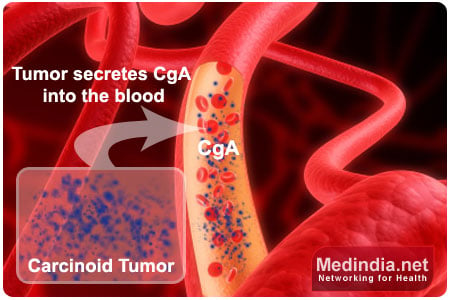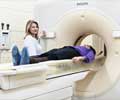- Cecil Medicine, 23rd Ed.
- Harrison’s Principles of Internal Medicine, 17th Ed
About
Carcinoid is a benign tumor that results in carcinoid syndrome. Recognising the symptoms, signs can help with diagnosis and treatment by surgery.
Carcinoid tumors may be defined as noncancerous (benign) or cancerous (malignant) growths that sometimes produce excessive amounts of hormone like substances, resulting in the carcinoid syndrome. Only 8 to 10% of all carcinoid tumors are associated with the carcinoid syndrome. The rate of growth of a carcinoid tumor is typically slow, and many patients with carcinoid syndrome survive for years after the disease gets diagnosed.
The cells that may give rise to these neuroendocrine tumors (carcinoids) are called enterochromaffin cells. These cells are located throughout the body; however carcinoid tumors primarily occur in:
- Appendix (35% of all carcinoid tumors)
- Small intestine (22%)
- Lung (15%)
- Rectum (10%)
- Stomach (3%)

Carcinoid tumors may produce an excess of biologically active substances, such as serotonin, tachykinins (such as substance P), histamine, prostaglandins, etc. It is only when these secretions exceed particular amounts that symptoms start manifesting. The most common endocrine consequences of these tumors are –
- Cutaneous flushing,
- Diarrhoea,
- And heart diseases.
Risk Factors that increase the chances of this syndrome includes- Family history of genetic syndromes like Multiple Endocrine Neoplasia type 1 (MEN 1), pernicious anemia and run in the family.
The diagnosis is established by presence of clinical symptoms and confirmed by measuring of urinary 5-HIAA in a patient as this is raised. A CT scan or isotope study further confirms the location of the tumor.
Surgical removal is most effective when a carcinoid tumor and for symptoms Octreotide is a commonly used drug.
















